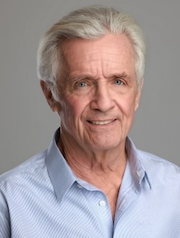
John Sellers on JPMorgan's, Chase Manhattan's, Salomon Bros.' and Paribas's Ways of Doing Things (versus Citi's)
Talking of corporate culture: Banking is a people and information business where, contrary to many other industries, one bad apple can bring the house down, and has. No need to list them.
I was fortunate to see many banking cultures: JPMorgan, London 1972-1980; Chase Australia and NYC 1980-1987; Salomon Brothers 1987-1990; a short stint with Citi before it exploded in 1991 thanks to Sadaam Hussein and dumb real estate decisions; then Paribas in Paris, setting up and leading what is now BNPParibas's Global Project Finance Group.
Later in life, I would explain I was in banking when it was an honest business. I credit JPMorgan for that because the values I learned back then never left me; that can be a handicap best exemplified by Enron as corporate ethics declined.
JPM back then had a culture no other firm could match. Goldman Sachs had a few guys in London. All MorganStanley had was a joint venture with us in Paris. But we were “it”. I can’t tell you how many Chase colleagues, after I joined from JPM, would ask me over a beer, “What’s the secret of ‘Mother Morgan’. And I couldn’t, simply saying:
1. Put the client first.
2. Put the bank second.
3. Put yourself third.
And funnily enough you will do very well
One example also sticks out. I’d worked in Hamburg for Airbus in my gap year, so when SONAT had a $100 million drilling rig trapped in the Bloehm & Voss shipyard there because of massive overruns, I went with the CFO trying to figure out how we could structure a $100 million L/C, with no maturity, to pay subsequent court judgments, if any. I think the legal limit of the Bank then was about the same, and I was just an Assistant Treasurer negotiating when Tom Kellogg was fast asleep in New York and unavailable.
Calling him with great trepidation on his N.Y. opening, I explained what I’d signed, with no approval, and concerned he might have me fired for signing it. His response was, “I’d have fired you if you hadn’t signed it.”
But JPMorgan was pulling out of the Project Finance business, a decision that in hindsight was a big loss for U.S. banks. In 1980, Australia loomed large with almost $15 billion of world-class projects to finance. As with most PF, hot spots move around the world in waves, and Oz was now the center of the universe after the 1979 oil shock. So off I went to Melbourne, and we led $11 billion of those landmark projects. On my first day, I met David Rockefeller, who introduced me to Bill Butcher on his debut world trip.
The problem was, OMG how naïve I was! I decided on the first deal in Melbourne, we’d put some balls on the line JPM-style. Let’s underwrite the whole $250 million financing “advised” by First Boston, I thought, and control the deal. It turned out that I had missed that there simply wasn’t any international credit infrastructure in Chase to deal with super-complex deals. I’d fly to New York for 48 hours and bang on the door of the credit committee, assuming the deal had made its way through a Hong Kong credit committee. The first time they wouldn’t let me in, as I was “too close to the deal.”
Well, in the end, we won out thanks to the likes of Bob Shippee, who argued we were simply trying to do business as one team, not a collection of internal competitors. And we succeeded, because we led $11 billion of major deals. But it was tough, as the cultures were almost opposite to my DNA.
Chase Petroleum in New York beckoned where the Bank, like many others, was in trouble because of Drysdale and commercial paper, to name just two. The Bank realized, though, that they needed a new type of relationship banker and, thanks to the likes of Steve McTiernan, I was finally accepted as someone who actually knew a "little" about the oil and gas business, despite being from JPM.
Four fun years. We masterminded the transformation of relationships with such as Exxon, which kept $25 million of balances and was looking for a new relationship model, and Honeywell, where we pulled off the impossible and led the first EuroDM bond with Deutsche Bank in tow.
But many were leaving, and I joined the crowd and joined Salomon – but on the trading floor selling bonds back to issuers. Two days after I joined, they – meaning Warren Foss (“Fossil”) –decided to tell me why they’d hired me. Warren was leadership reincarnated, but I also got a nickname as we (well, I) were selling more junk bonds back to issuers than corporate finance was underwriting. They wanted to combat Drexel by an army of one – me – backed up by the junk bond desk of a trading beast the world trembled in fear of.
This for me was like going back to play rugby on my 40th birthday. The culture of teamwork and ethics was at least on par with JPM. Most meetings were standing up, where the most junior team member carried almost the same weight as John Gutfreund, and you could get fired for hoarding vital trading info. And the same “client” ethos was paramount, only this time it was the “account franchise”.
Sadly that fell apart and into Buffet’s hands. Mainly because they decided for the first time to pay a huge bonus of $20 million solely on a percentage formula for the individual trader, leading to a rigging of the U.S. Bond Market. Catastrophe.
Hiring traders from Drexel didn’t help, although David Salomon did not do so badly in hindsight.
Along comes Citi, which now wanted to recreate the “senior banker”. John Reed had decided he wanted to shake up the World Corporate Group and was going to hire five bankers with both commercial and investment banking backgrounds. I was the first to join, but on the day I came aboard, Sadaam marched into Kuwait. Citibank previously had decided that syndicating high margin real estate loans was dumb. It would be so much more profitable to keep them. Citibank, once you stripped out the credit card divisions, had a massive negative market cap and to all intents went broke overnight. And with its internal culture of “dog eat dog”, that’s when you all need to pull together.
It was an experience I’ll remember always. One of my super household name clients thought to be near Triple-A, had $8 billion in Master Limited Partnerships financed 90 percent with debt off balance sheet. No one had read the financials. Our exposure was a $1 billion commercial paper backup line we managed. Before we knew it, they locked us in a room, told us they were drawing the whole $1 billion and lodging it in another bank.
Citi's chief credit officer, realizing I had $1 billion of credit exposure and floundering in a bank I’d only been at for three weeks, walked me over to the Head of Real Estate hoping for a little help. After a two-minute conversation, she said, “I'm sorry, I don’t have time to mess around with $1 billion.
I then concluded Citi was simply too big to manage. They later were gobbled up by the new Salomon and the rest is history. I can think of nothing good about Citi’s culture.
But the world was changing and governments were being pushed to have the private sector build infrastructure. After a year of relaxing on the beach in the Hamptons, I joined Paribas. Paribas was unique in that it was clearly the best equipped with a team of people, not just an outside credit risk management group like Coface, in Export Finance.
But a large part of the required skill set was schmoozing Finance Ministers into signing a government guarantee on a $1 billion power station (and who cared if it worked or cost twice as much). But that wasn’t going to work in an Enron world. The project finance teams didn’t appreciate schmoozers, yet you needed them to navigate corridors of power. In most eurobanks, institutional dislike between Export and Project Finance within the same bank was rampant.
But Paribas believed une banque as the way to go. We weaponized internal collaboration and became unstoppable. I loved it when Citibank asked me how we did it. Elitist it might be, but it was a very smart ethical organization, and few banks could compete with our nimble approach. Its reputation as un panier de crabes (a basket of crabs) proved largely unfounded as there was a collegial atmosphere, and they loved this Brit who had the temerity to become fluent in French from scratch.
A standard credit meeting dissolved into scratch one day, transformed into an all-day meeting when an opportunity suddenly needed a 24-hour turnaround.
In conclusion, I feel very honored to have been part of different, but with the exception of Citi, common internal cultures that emphasized teamwork, integrity and a passion for doing the right thing by the people we were there to serve.
Paribas was snapped up mainly because of what we’d created.
And JPMorganChase emerged and from the outside, it seems to have preserved the best of the House of JPMorgan and David Rockefeller. Bravo!
 Corporate Culture
Corporate Culture
